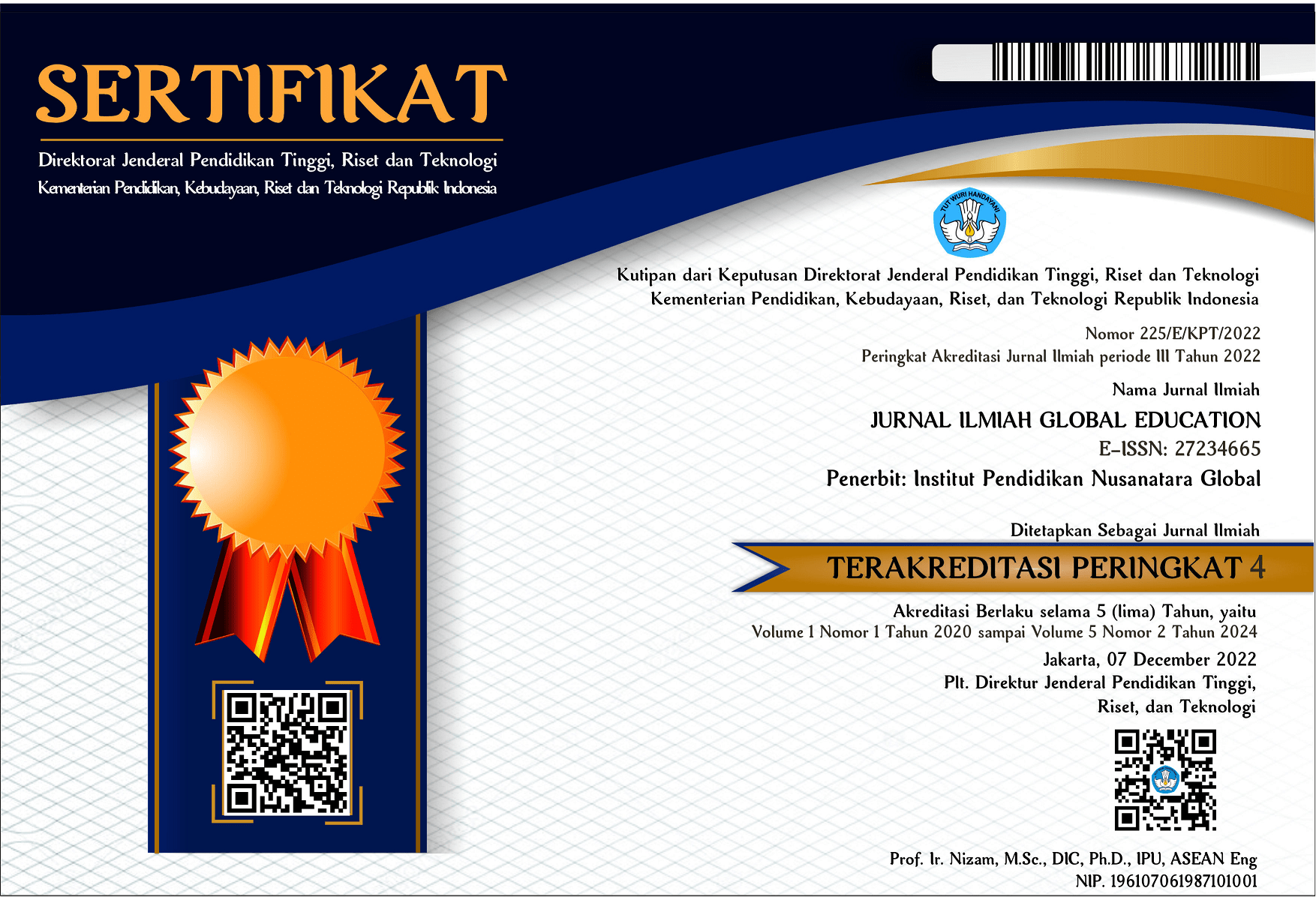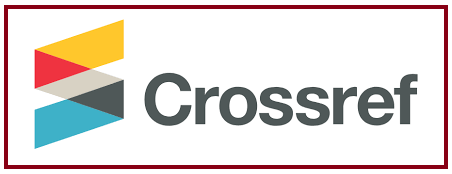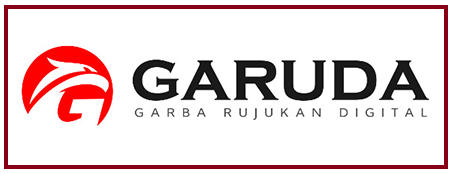EVALUASI PENGGUNAAN MODUL INTERAKTIF BATUK DAN SESAK SEBAGAI MEDIA PEMBELAJARAN MANDIRI STASE KOMPREHENSIF
DOI:
https://doi.org/10.55681/jige.v4i3.1090Keywords:
Interactive Module, Comprehensive Station, SUS, UEQAbstract
The Cough Shortness interactive module is a medium that was developed to facilitate students' independent learning at the comprehensive stage, in order to increase the graduation rate for UKMPPD participants at the Faculty of Medicine, University of Riau. This study aims to determine the success of an interactive module that was developed by measuring the increase in user knowledge of the module and the level of user acceptance (usability). This research is a quantitative study using an experimental one group pretest post-test design to assess increased knowledge and quantitative descriptive to see user acceptance of the cough and tightness interactive module using 2 questionnaires, namely the System Usability Scale (SUS), User Experience Questionnaire (UEQ) . This research was conducted at the Faculty of Medicine, University of Riau in September – November 2022. The results of this study showed an increase in mana knowledge with a different test between the average pre-test score of 57.91 and the average post-test of 82.83, paired sample T-test shows the difference with sig. (2–tailed) of 0.000 (p <0.05). The SUS score of 71 indicates that the interactive cough shortness module is developed in the acceptability ranges obtained are "acceptable" which means acceptable. On the grade scale, the category "C" is obtained and on the adjective ratings, the category "good" is obtained. The overall UEQ score has an average value of 1.52 with a "good" interpretation. Pragmatic quality has an average value of 1.80 with an "excellent" interpretation, for hedonic quality has an average value of 1.22 with a "good" interpretation. With the results of this study it can be concluded that the interactive cough and shortness of breath module succeeded in facilitating users to learn independently, by showing good acceptance from users of the interactive modules that were developed and able to increase user knowledge
Downloads
References
Standar Kompetensi Dokter Indonesia. Vol 1. 2nd ed. Konsil Kedokteran Indonesia; 2012.
Dwijayani NM. Development of circle learning media to improve student learning outcomes. 2019;1321(2). doi:10.1088/1742-6596/1321/2/022099
Rowbotham MC, Astin J, Greene K, Cummings SR. Interactive Informed Consent: Randomized Comparison with Paper Consents. 2013;8.
Astuti L, Wihardi Y, Rochintaniawati D. The Development of Web-Based Learning using Interactive Media for Science Learning on Levers in Human Body Topic. J Sci Learn. 2020;3(2):89- 98. doi:10.17509/jsl.v3i2.19366
Moro C, Stromberg Az. Enhancing variety through gamified, interactive learning experiences. Med Educ. 2020;54(12):1180-1181. doi:10.1111/medu.14251
Rahmatsyah SW, Dwiningsih K. Development of Interactive E-Module on The Periodic System Materials as an Online Learning Media. 2021;7(2):255. doi:10.29303/jppipa.v7i2.582
Asrul, Ananda R, Rosinta. Evaluasi Pembajalaran.; 2014.
Hertzum, Morten. Usability Testing: A Practitioner's Guide to Evaluating the User Experience. Synthesis Lectures on Human-Centered Informatics.2020.1.i-105. 10.2200/S00987ED1V01Y202001HCI045.
Sandars J, Lafferty N. Twelve Tips on usability testing to develop effective e-learning in medical education. Med Teach. 2010;32(12):956-60.
Sandra j. Producing useful evaluations in medical education. Education for Primary Care 2017 ; 28(3) : 137-140
Sandra j. The importance of usability testing to allow e-Learning to reach its potential for medical education. Education for Primary Care 2010 ; 21(1) : 6-8
H. M. Hassan and G. H. Galal-Edeen, "From usability to user experience," 2017 International Conference on Intelligent Informatics and Biomedical Sciences (ICIIBMS), 2017, pp. 216-222, doi: 10.1109/ICIIBMS.2017.8279761.
Barnum CM. Usability testing essentials: ready, set... test!. Morgan Kaufmann; Cambridge United Stated.2020 Jun 27. 2 edition
Brooke, John. SUS: A quick and dirty usability scale. Usability Eval. Ind.1995; 189.
Schrempp, Martin & Hinderks, Andreas & Thomaschewski, Jörg. Design and Evaluation of a Short Version of the User Experience Questionnaire (UEQ-S). International Journal of Interactive Multimedia and Artificial Intelligence. 2017;4.103.
Z. Sharfina and H. B. Santoso, “An Indonesian adaptation of the System Usability Scale (SUS),” in International Conference on Advanced Computer Science and Information Systems, ICACSIS 2016, 2017, pp. 145–148.
H. B. Santoso, M. Schrepp, R. Yugo Kartono Isal, Y. Utomo, and B. Priyogi, “Measuring User Experience of the Student-Centered e-Learning Environment,” J. Educ. Online-JEO. 2016 ; 13(1): 142–166.
Mergany, N.N., Dafalla, AE. & Awooda, E. Effect of mobile learning on academic achievement and attitude of Sudanese dental students: a preliminary study. BMC Med Educ. 2021 ; 2 (21), 1-7.https://doi.org/10.1186/s12909-021-02509-x
Yoo IY, Lee YM. The effects of mobile applications in cardiopulmonary assessment education. Nurse Educ Today. 2015 Feb;35(2)
Gilavand A, Shooriabi M, Shahzadeh B. The impact of application of mobile educational software (DMOTMC) on promoting students’ awareness of dental treatment of patients with systemic diseases. J Med Educ Dev. 2016; 9(23):31–41.
Kamangar BM, Jahanian I, Gholinai H, Zadeh, Abbas H. A preliminary study of the effect of mobile-based education on dental students’ learning in practical course of oral pathology. J Med Educ Dev. 2016;9(22):21–6.
Mayer RE, Moreno R. A cognitive theory of multimedia learning: implications for design principles. 1998. Paper presented at the 15th ACM SIGCHI Conference on Human Factors in Computing Systems (CHI-98), Los Angeles, CA, April 18–23. Retrieved June 5, 2018
Brooke, John. "SUS-A quick and dirty usability scale." Usability evaluation in industry. 1996 ;11(194): 4-7.
Brooke, John. "SUS: a retrospective." Journal of Usability Studies. 2013; 1(8) 29-40.
Davids MR, Chikte UM, Halperin ML. Development and evaluation of a multimedia e-learning resource for electrolyte and acid-base disorders. Adv Physiol Educ. 2011;35(3):295–306.
Gaikwad N, Tankhiwale S. Interactive E-learning module in pharmacology: a pilot project at a rural medical college in India. Perspect Med Educ. 2014;3(1):15–30.
ISO. (2018). International Organization for Standardization (ISO) 9241-11:2018.
Hsiao, CC., Tiao, MM. & Chen, CC. Using interactive multimedia e-Books for learning blood cell morphology in pediatric hematology. BMC Med Educ. 2016; 11(16), 290.
Schrepp, M. Held, T. Laugwitz, B. The influence of hedonic quality on the attractiveness of user interfaces of business management software. Interacting with Computers. 2006; 18.1055-1069.
Hassenzahl, M. The effect of perceived hedonic quality on product appealingness. International Journal of Human-Computer Interaction. 2001; 13(4), 481-499.
Filgona, Jacob & Sakiyo, John & Gwany, D & Okoronka, Augustine. Motivation in Learning. Asian Journal of Education and Social Studies.; 2020; 9(10).16-37.
Downloads
Published
How to Cite
Issue
Section
License
Copyright (c) 2023 JURNAL ILMIAH GLOBAL EDUCATION

This work is licensed under a Creative Commons Attribution-ShareAlike 4.0 International License.













